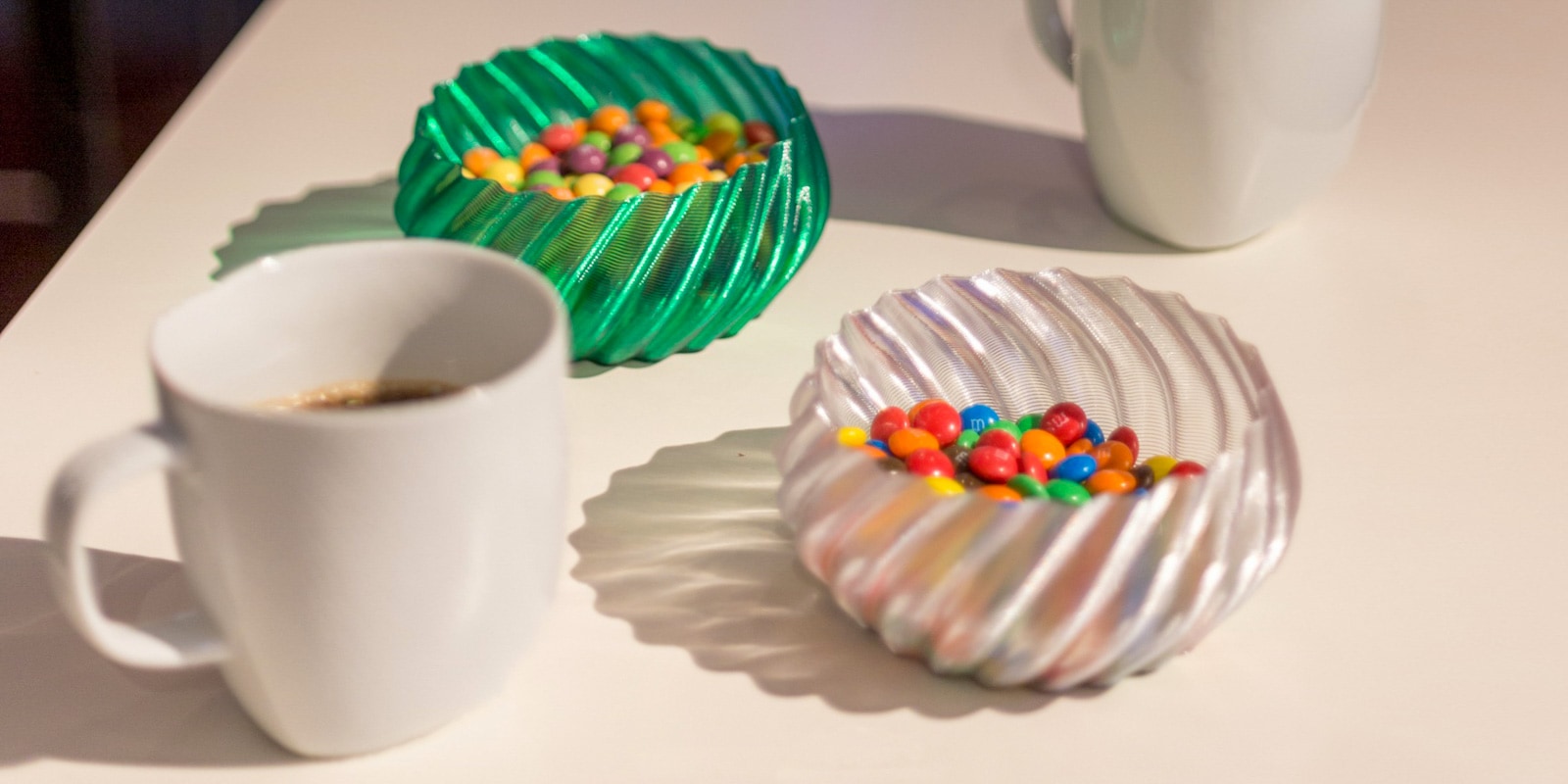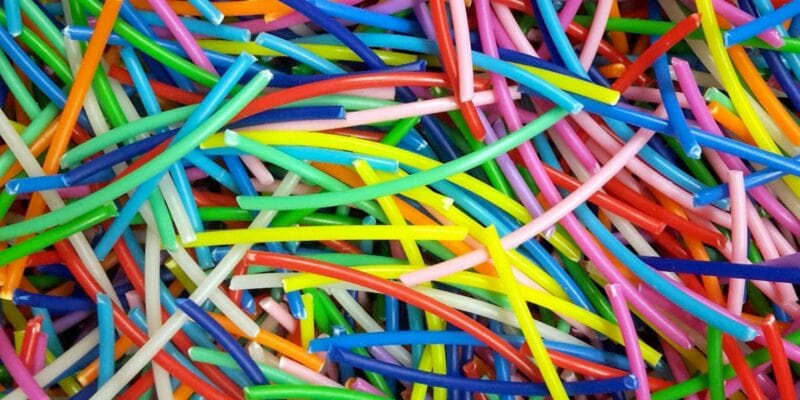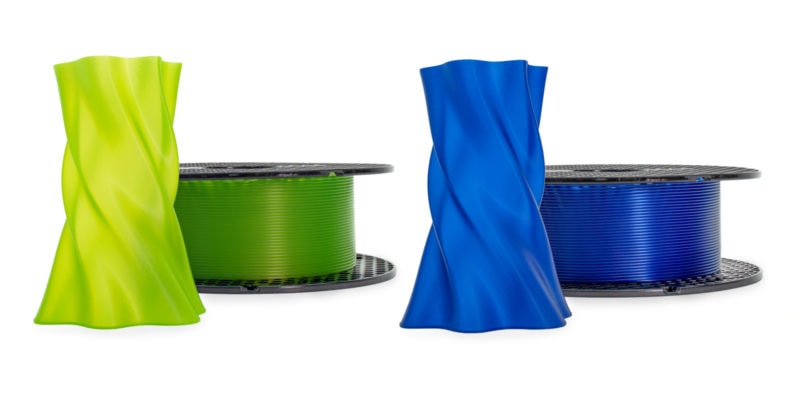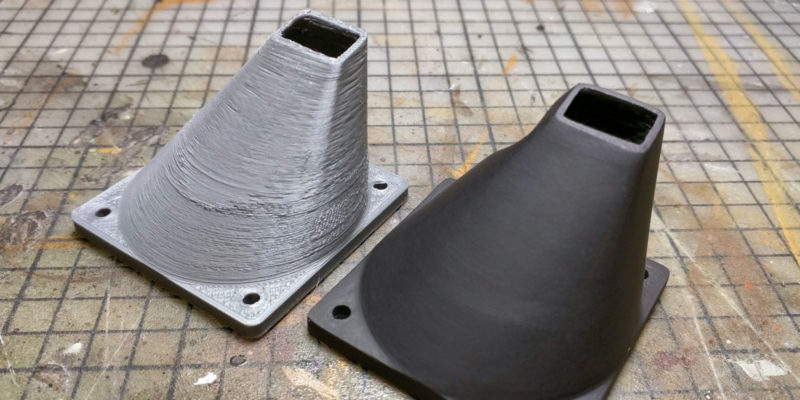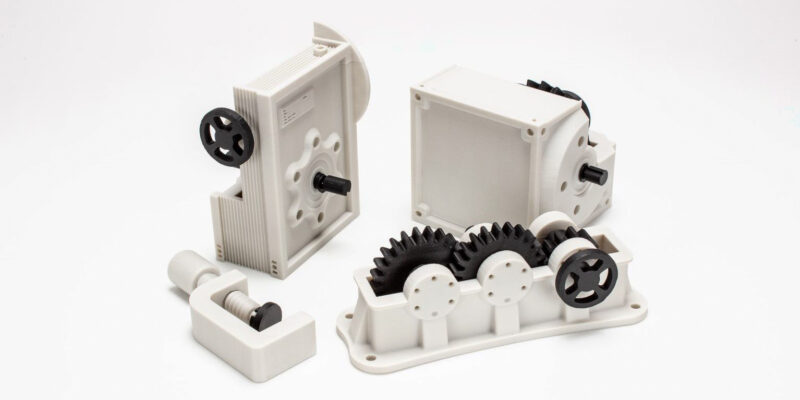If you’ve looked through Thingiverse, MyMiniFactory, or other STL sharing sites, you’ve probably seen several kitchen utensils and other food-contact projects to 3D print. With PLA filament being the most common 3D printing material, “Is PLA food-safe?” is a common question.
In this article, we’ll explain whether or not PLA is a food-safe material, and what things you should pay attention to when trying to make food-safe items with PLA filament and your 3D printer.
Why Is Food Safety Important in 3D Printing?
Food safety in 3D printing is important if you are trying to print items that will come into direct or indirect contact (no matter how briefly) with foods and beverages. However, toys and other items that children are likely to put in their mouths are also a concern.
Since the final print contains materials both from the filament and that have leached in from your 3D printer, it is important to be extra cautious when using your 3D printing projects on or near your food. There are many substances out there that you do not want to introduce into your body.
What Is a Food-Safe Material?
A food-safe material is a material that is considered safe for contact with food. This can pertain to food packaging, utensils, and containers. Most materials that come in contact with food will have at least some minuscule leaching into the food it touches (a process known as blooming), so most countries have developed systems for regulating which materials are used in situations with direct or indirect contact with food.
Is PLA Food-Safe?
PLA (polylactic acid) is a common bioplastic printing material made from natural materials like corn and sugarcane. Aside from being one of the most popular 3D printing materials, PLA is often used to make product packaging, medical device parts, shrink wrap, plastic bottles, and other classic food containers.
In 1995, a team of scientists conducted an extensive study on PLA (polylactic acid) and its food safety. They reached the conclusion that PLA is generally recognized as safe (GRAS) for contact with food and food contact surfaces.
Their research showed that PLA leaches a small amount of lactic acid into the food it comes into contact with but otherwise found no issues with PLA-related toxicology. Lactic acid itself is a naturally-occurring acid found in several common foods, as well as breast milk, so there is little concern about lactic acid intake.
Now, while this study considers PLA food-safe, it did not consider 3D printed PLA specifically.
Why 3D Printed PLA Might (Not) Be Food-Safe
There are many reasons why printed PLA filament may not be food-safe. It’s important to consider that 3D printing uses high temperatures, potentially dangerous metals, and unsterilized components. Properly designed manufacturing processes do not.
So while PLA food containers and plastic bottles made with other methods are generally recognized as safe, 3D printed PLA containers may not be.
Hot End
One of the biggest issues with using 3D printers for food items is the possible leaching of toxic chemicals and heavy metals from the 3D printer hot end. Most printers come standard with a brass nozzle, which consists of copper and small amounts of tin. However, it is not uncommon for brass to contain trace amounts of lead, which may enter a 3D printed item during the filament extrusion process and later come into direct contact with your food.
You can mitigate some of this risk by switching to a stainless steel nozzle. It is an easy change to make on most printers, though it will affect how well your printer heats your filament since stainless steel has different thermal properties than brass.
Changing the nozzle also doesn’t affect the other parts of the extruder assembly that the filament may come into contact with. Additionally, if you have used other print materials like ABS, Nylon, or carbon fiber, trace amounts of those toxic particles may still be present in the extruder even after switching to PLA.
Friction is yet another reason a 3D printer’s extruder system could introduce harmful chemicals and toxins into a printed object. Extruder gears have to exert significant force on the filament to push it through. This process can introduce additional debris or small metal particles into the filament. Especially if you have been printing with abrasive PLA filament types beforehand.
In addition, most extruders use oils and lubricants that are unsafe for human consumption on the internal components to keep them moving smoothly. It is perfectly conceivable that these substances make it into the final 3D printed object as well.
Gaps Between Printed Layers
Another concern with 3D printing and food safety is the way 3D printed items are made. During the additive manufacturing process, layers of melted material are deposited on top of each other, but this leaves small gaps between each layer.
Under normal circumstances, this isn’t an issue. However, if food particles, saliva, or other materials get stuck in those gaps, they will accumulate bacteria over time.
Unfortunately, there is no easy way to sanitize 3D printed PLA food items. Sterilizing them at high temperatures or even putting them in the dishwasher is no option because of PLA’s low tolerance for heat.
Some companies make antimicrobial PLA filaments to kill off any bacteria or other harmful substances that try to grow on 3D printed items. However, the efficacy of the antibacterial additives does wear off over time (especially when being subjected to frequent washings).
You can minimize gaps in layers by using the right PLA print settings, but even this won’t completely remove them.
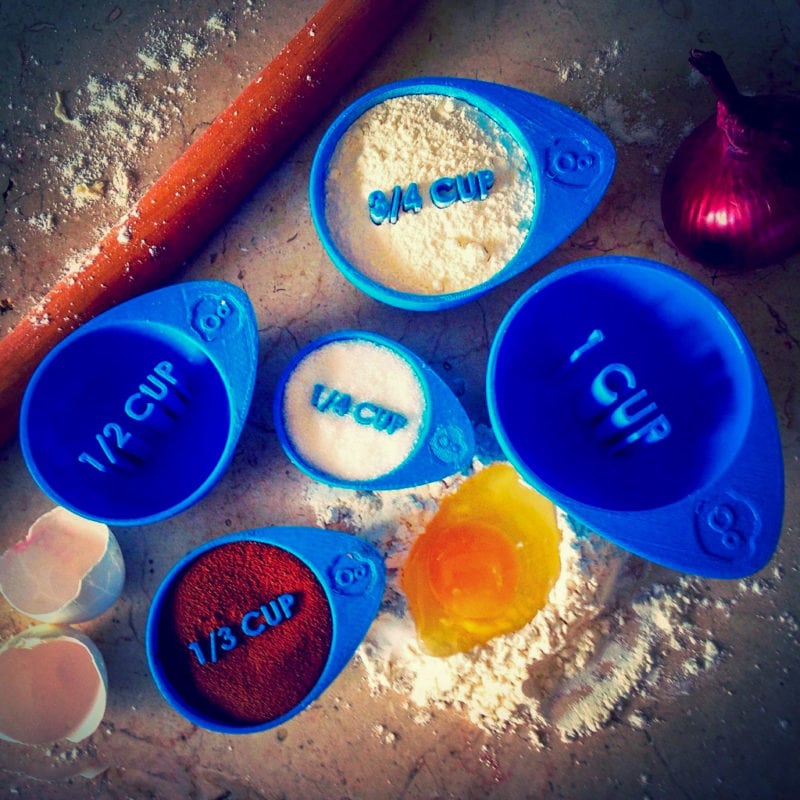
Additives to PLA Filaments
Some PLA filaments come with contaminants, like unsafe additives or toxins, from the factory. It can be hard to know for certain if your particular spool of PLA is contaminated with anything that makes it food-unsafe. However, going with a reputable filament brand is a pretty safe bet at avoiding issues with unsafe additives.
Reputable filament manufacturers, like Prusa and Polymaker, closely regulate their manufacturing processes so that their filaments stay within specification. Cheaper brands, on the other hand, are more likely to cut corners to save costs and don’t regulate their manufacturing processes as well.
However, even high-end filament brands can include things that are not strictly food-safe. Their PLA may be pure and uncontaminated, but the dyes used to add color to the filament or other additives may not be rated food-safe.
Some filaments (including some antibacterial brands) are FDA-approved. This means all of their materials and equipment meet FDA standards. Keep in mind that while this is great for overall peace of mind, it does not keep the finished prints from picking up contaminants from the 3D printer.
PLA+ filament brands add even more materials to their products to counteract some of PLA’s less desirable material properties, so you should use extra care when using a specialized PLA+ blend.
Is PLA Bad to Ingest?
Pure PLA is polylactic acid. The previously linked study conducted in 1995 found that PLA releases a small amount of lactic acid into the food it comes into contact with. Lactic acid itself is used in the human body and can be found in natural sources like breast milk and certain foods.
That being said, 3D printed PLA is not pure PLA. PLA filament has other chemicals and materials added to it, as well as any contaminants it picks up in the 3D printer that can raise some health concerns.
So while trace amounts of PLA or lactic acid are unlikely to harm you if ingested, other things present in a 3D printed item may.
Can I Use PLA for Cookie Cutters?
Cookie cutters are one of the more common applications for 3D printed food items. While they are considered safer than, say, a 3D printed fork or cup since they have a very brief food contact time with the dough and the food is cooked after, there are still risks to using it.
One way to make them (and other 3D printed items) safer is to cover them with food-grade epoxy resin or other food-safe coatings. There are several food-safe epoxy resin options marketed for use on countertops, cutting boards, and other surfaces that will come into contact with food. A popular choice for this type of application is ArtResin.
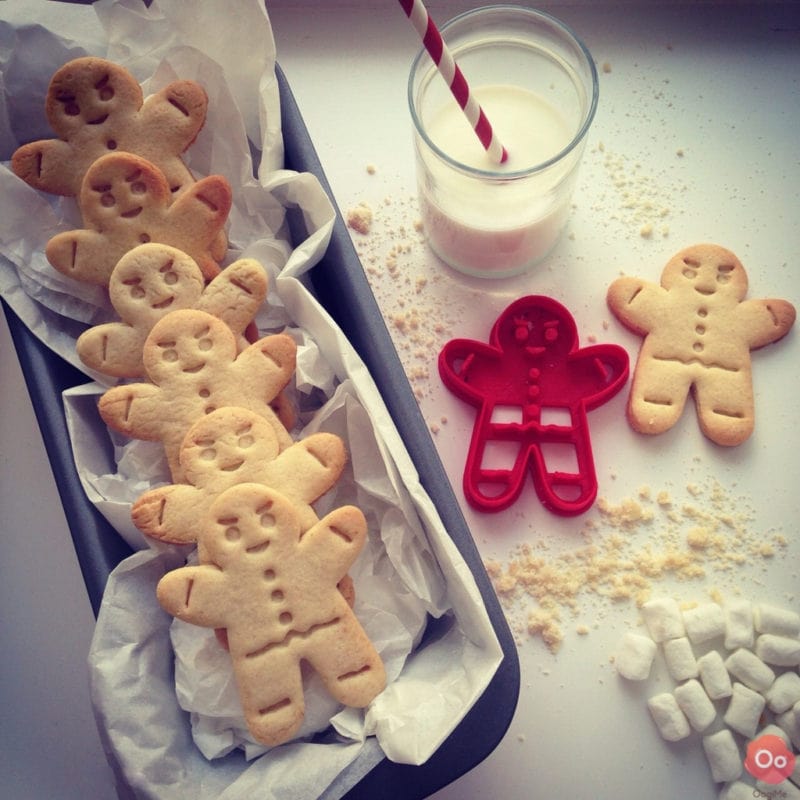
Is PLA Filament Safe for Food?
Some filament brands are technically safe for food. FDA-approved filaments are considered food-safe materials. That said, the resulting 3D prints made with food-safe PLA filament may still pick up contaminants from your 3D printer.
Is PLA Filament Toxic?
High-quality PLA filaments are not considered toxic and are generally safer than most other materials for 3D printing. Especially when compared to other filaments, like ABS vs PLA or PETG vs PLA, PLA tests favorably in terms of food safety.
PLA filament that is FDA-approved is even less likely to contain toxins. They use carefully sourced plastics, dyes and other additives, and equipment to make their PLA food-safe.
Cheap PLA filament tends to be less reliable in many ways, including safety, so it is always a good practice to buy a reputable brand when purchasing filament. If you aren’t sure which brand to choose, you can find a list of our recommendations for the best PLA filaments here.
PLA can also be toxic for the environment. While the biodegradability of PLA is not in question, it is important that you dispose of it correctly.
Can You Make 3D Printing Safer for Food-Contact Items?
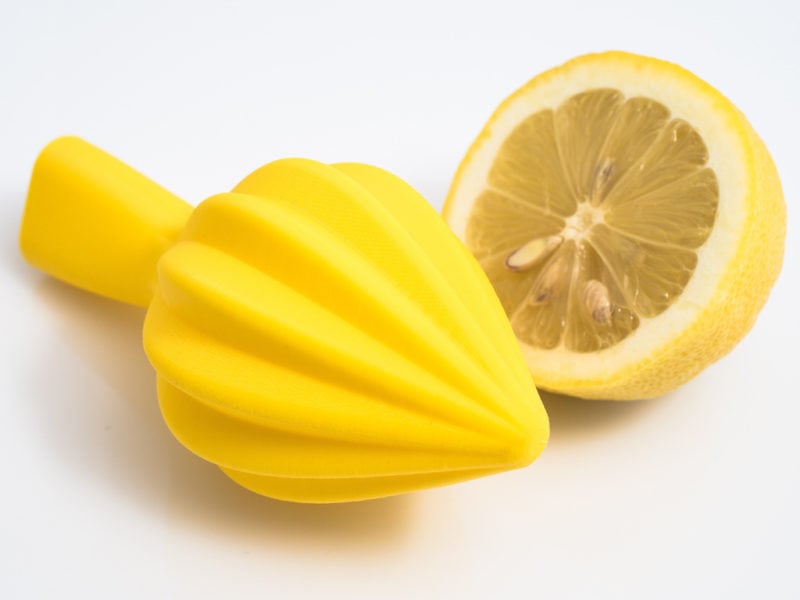
While there is no way to make printed PLA food-safe without the development of a special food-grade 3D printing machine, you can use a few tactics to make brief contact safer.
- Use a stainless steel nozzle to reduce the chance of lead and other heavy metals leaching into the melted filament.
- Use a reputable high quality or FDA-rated PLA filament for your prints and always check the material safety data sheet for your filaments and any other products used to make sure all the materials in them are nontoxic materials.
- Coat your finished 3D prints in a food-grade resin such as ArtResin to minimize exposure to harmful materials and to seal the porous layer gaps.
- Use SLA printing to make masters for molds or ceramic dishes and utensils.
- Smoothing PLA and melting PLA prints’ outer layers are both valid strategies to reduce the depth of layer lines that can trap bacteria.
Are There Any Food-Safe 3D Printers Available?
There are some consumer 3D printers that print chocolates and candies, but there are none designed to specifically print food-safe tools, dishes, and utensils.
Extruder-based printers are probably the closest option. Using materials like clay instead of plastic, they don’t use heat during their printing process. The syringe is also usually replaceable and self-contained, so there is little chance of the print picking up heavy metal contaminants from the machine.
Since printed clays need to be kiln-fired to finish, ceramic printing is far more expensive than traditional 3D printing. If you are serious about wanting to create your own 3D printed utensils, dishes, and other food-safe items, ceramic printing might be one of the most practical ways of doing so.
Final Thoughts
PLA is a bioplastic made from natural materials, so it is not surprising that scientists determined pure PLA food-safe. Even so, 3D printed PLA is less safe due to factors from the 3D printing process itself, like harmful additives to filament, toxic molds and other bacteria buildup from porous layers, and contaminants of toxic substances from the printer.
Therefore, when it comes to answering the question of ‘is PLA food-safe’, the answer is: in 3D printing, it nearly always is not.
While some brands of PLA filament have FDA approval, the 3D printing process is too unpredictable to truly be a safe manufacturing method for food items without the use of additional processes like coatings and sealants.
